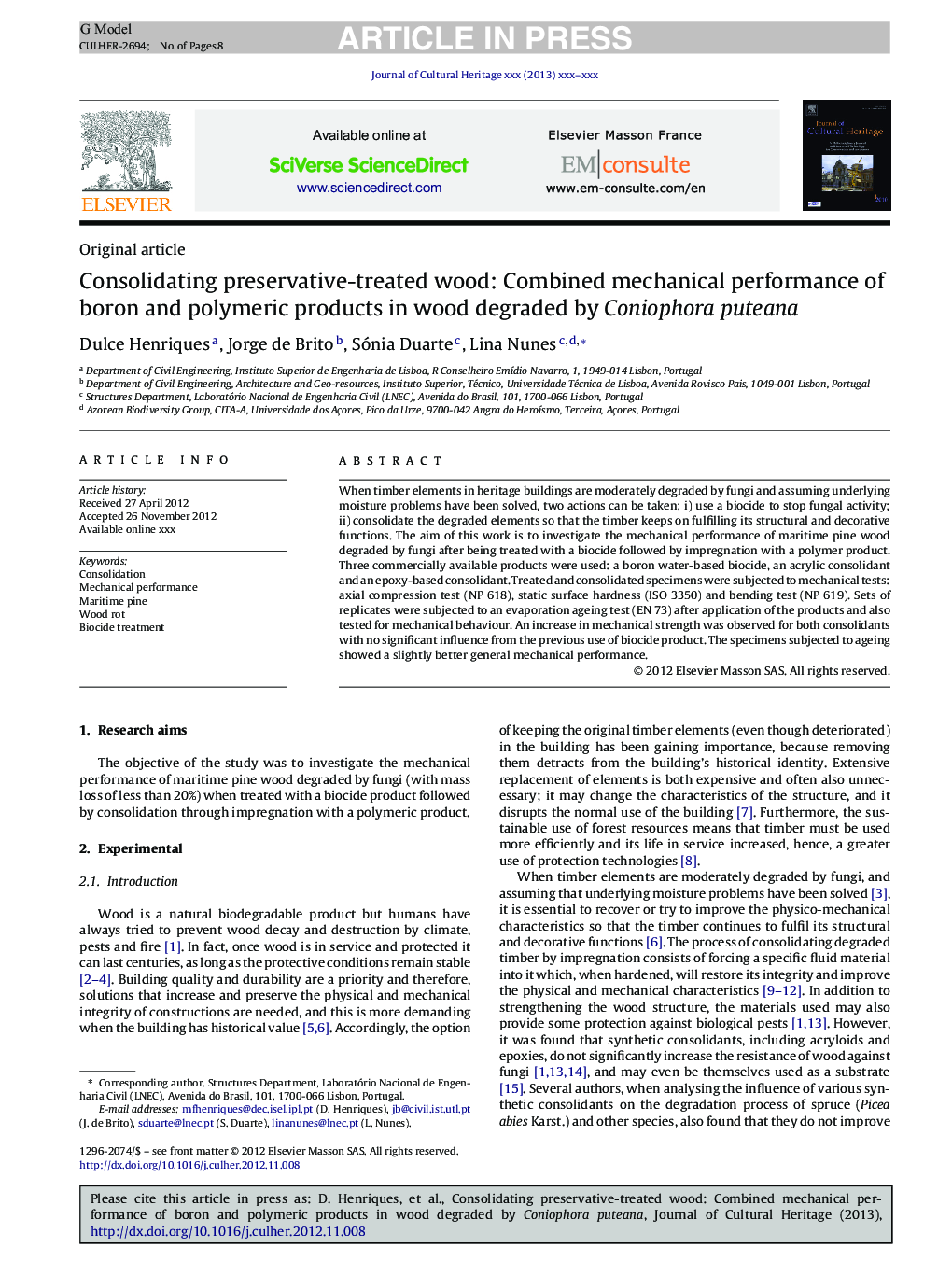| Article ID | Journal | Published Year | Pages | File Type |
|---|---|---|---|---|
| 10500017 | Journal of Cultural Heritage | 2014 | 8 Pages |
Abstract
When timber elements in heritage buildings are moderately degraded by fungi and assuming underlying moisture problems have been solved, two actions can be taken: i) use a biocide to stop fungal activity; ii) consolidate the degraded elements so that the timber keeps on fulfilling its structural and decorative functions. The aim of this work is to investigate the mechanical performance of maritime pine wood degraded by fungi after being treated with a biocide followed by impregnation with a polymer product. Three commercially available products were used: a boron water-based biocide, an acrylic consolidant and an epoxy-based consolidant. Treated and consolidated specimens were subjected to mechanical tests: axial compression test (NP 618), static surface hardness (ISO 3350) and bending test (NP 619). Sets of replicates were subjected to an evaporation ageing test (EN 73) after application of the products and also tested for mechanical behaviour. An increase in mechanical strength was observed for both consolidants with no significant influence from the previous use of biocide product. The specimens subjected to ageing showed a slightly better general mechanical performance.
Related Topics
Physical Sciences and Engineering
Chemistry
Physical and Theoretical Chemistry
Authors
Dulce Henriques, Jorge de Brito, Sónia Duarte, Lina Nunes,
